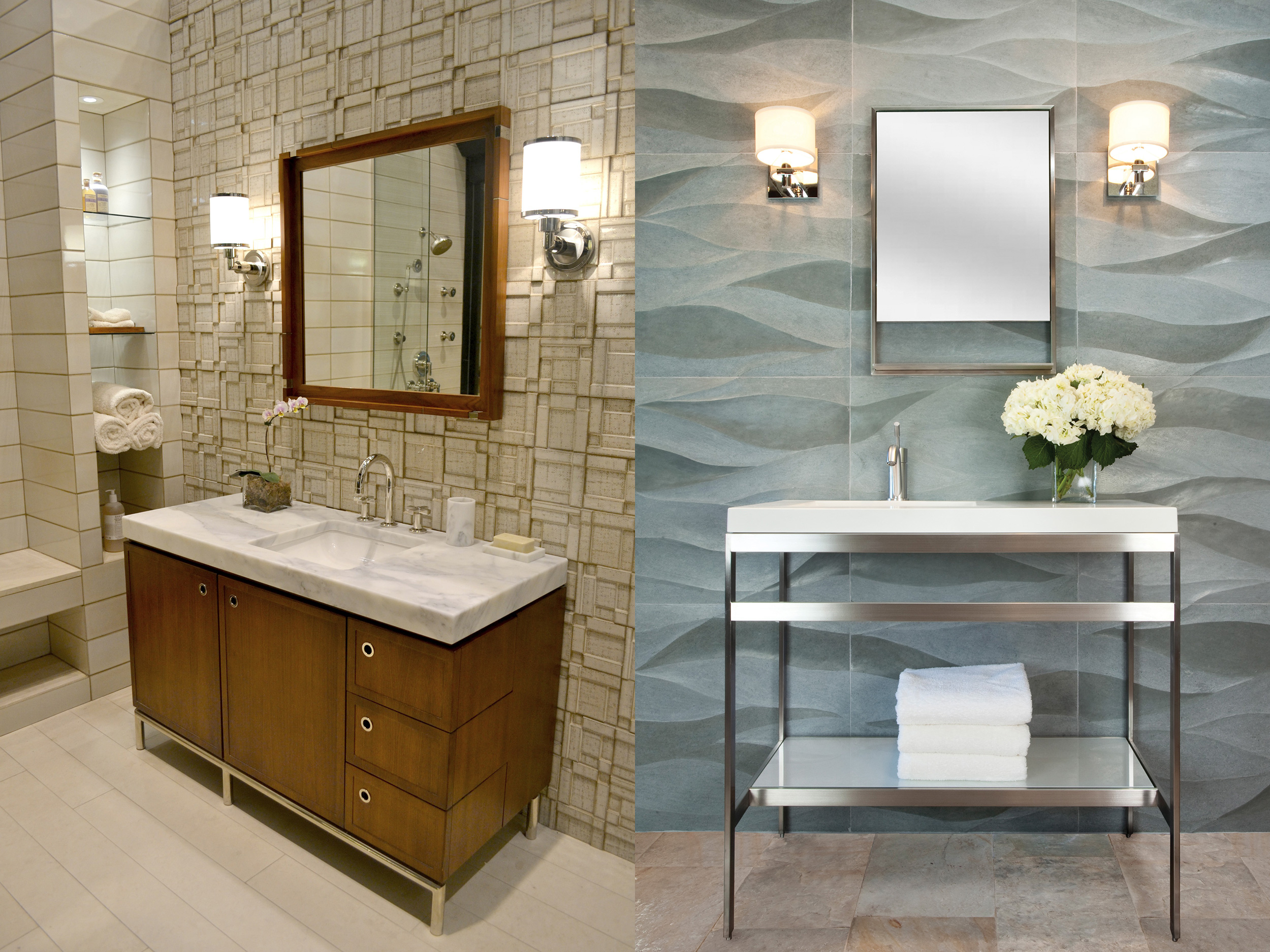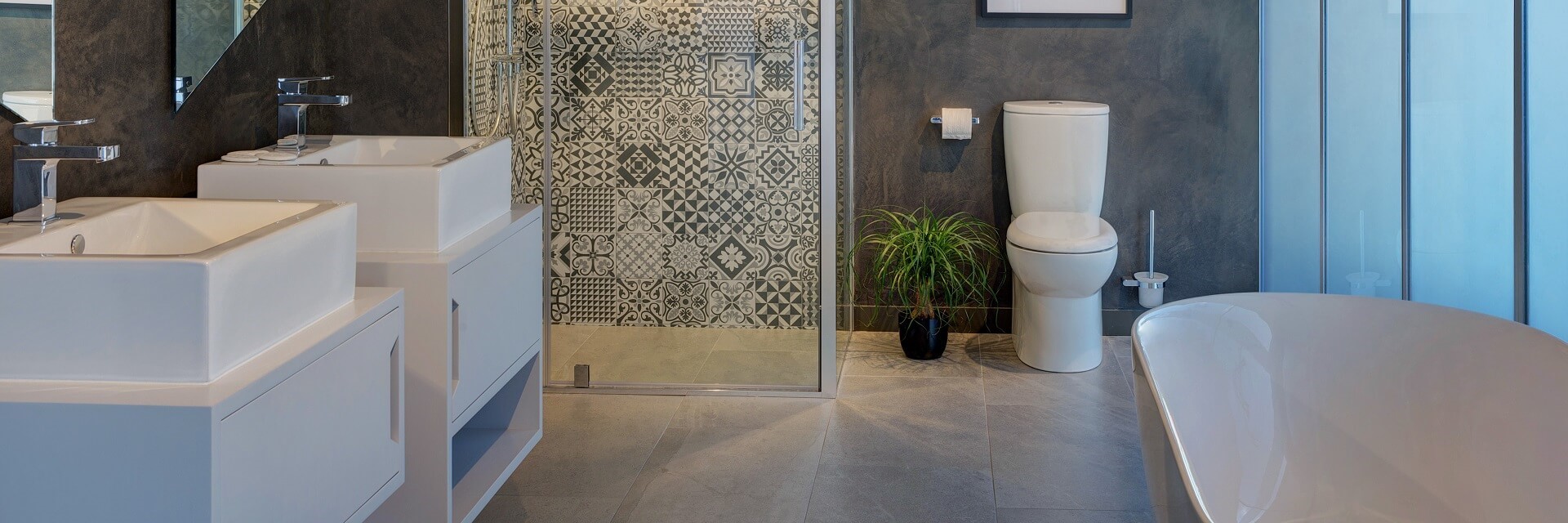The Rise of Matte Finishes

Matte finishes have taken the bathroom design world by storm, adding a touch of modern sophistication and a departure from the traditional polished look. This trend is not just about aesthetics, but also about practicality and durability.
The Appeal of Matte Finishes
Matte finishes offer a unique aesthetic that contrasts sharply with the glossy shine of polished chrome or nickel. The subtle, non-reflective surface creates a sense of understated elegance and a more contemporary feel. Matte black, in particular, has become a popular choice, adding a touch of drama and depth to bathroom spaces. The muted tones of matte finishes can also help to create a calming and relaxing atmosphere, making them a perfect choice for a bathroom sanctuary.
Practical Benefits of Matte Finishes
Beyond aesthetics, matte finishes offer several practical benefits. Their non-reflective surface helps to mask fingerprints and watermarks, making them ideal for high-traffic areas like bathrooms. This feature is particularly important in families with young children or in homes where the bathroom is used frequently. Matte finishes are also more durable than polished finishes, as they are less susceptible to scratches and abrasions. This makes them a good choice for long-term use and for areas where the fixtures are likely to be used frequently.
Designing a Bathroom with Matte Finishes
To incorporate matte finishes effectively, consider the overall style of your bathroom. For a modern and minimalist look, pair matte black fixtures with sleek white tiles and simple accessories. For a more traditional space, opt for brushed nickel or matte brass finishes to complement existing décor.
A bathroom designed with matte finishes can be both stylish and practical, creating a space that is both functional and visually appealing.
The Influence of Industrial Design: Bathroom Fixture Finish Trends 2017

The industrial design movement, with its emphasis on functionality and raw materials, has had a significant impact on bathroom fixture trends. This aesthetic, often characterized by exposed plumbing, minimalist designs, and the use of reclaimed materials, has brought a sense of rugged elegance and authenticity to contemporary bathrooms.
Industrial Design Elements in Bathrooms, Bathroom fixture finish trends 2017
Industrial design has brought a new level of sophistication to bathrooms, incorporating elements that are both functional and visually striking. These elements are often inspired by the raw materials and exposed structures found in industrial spaces.
- Exposed Plumbing: One of the most prominent features of industrial design is the deliberate exposure of plumbing elements. This can include pipes, valves, and even exposed ductwork, which adds a sense of authenticity and ruggedness to the space.
- Raw Materials: Industrial design embraces the beauty of raw materials, often using metals like steel, copper, and brass in their natural, unpolished states. These materials add a touch of industrial grit and character to the bathroom.
- Minimalist Designs: Industrial design favors clean lines and simple forms, emphasizing functionality over ornamentation. This minimalist aesthetic is reflected in bathroom fixtures with streamlined shapes and minimal embellishments.
Examples of Industrial-Inspired Bathroom Fixtures
Several bathroom fixtures embody the industrial aesthetic, offering a blend of functionality and style.
- Exposed Pipe Sinks: These sinks, often made of metal or concrete, feature exposed plumbing that creates a striking visual contrast.
- Metal and Concrete Vanities: Industrial-inspired vanities are typically made of raw materials like metal or concrete, with simple, geometric designs.
- Black Metal Hardware: Black metal hardware, including faucets, towel bars, and toilet paper holders, adds a touch of industrial elegance to the bathroom.
Mood Board: Industrial-Inspired Bathroom
Bathroom fixture finish trends 2017 – Imagine a bathroom with a concrete floor, exposed brick walls, and a large, industrial-style window. The vanity is made of reclaimed wood with exposed metal brackets, and the sink is a sleek, exposed pipe design. The faucet is black metal, and the shower head is a minimalist, rain shower style. The overall effect is one of raw elegance and authenticity, with a nod to the industrial past.
Sustainable and Eco-Friendly Options

The bathroom, once a space solely focused on functionality, is increasingly becoming a reflection of our values. This shift is evident in the growing demand for sustainable and eco-friendly bathroom fixtures. Consumers are becoming more conscious of their environmental footprint and are actively seeking out products that minimize their impact on the planet.
Recycled Materials
The use of recycled materials in bathroom fixtures is a key aspect of sustainable design. Manufacturers are incorporating recycled metals, such as copper and stainless steel, into their products. These materials are sourced from scrap metal, reducing the need for virgin materials and lowering energy consumption.
Low-Flow Technology and Water-Saving Features
Water conservation is another crucial aspect of sustainable bathroom design. Low-flow technology, integrated into faucets, showerheads, and toilets, significantly reduces water usage without compromising performance. Modern fixtures feature aerators and spray patterns that optimize water flow, resulting in substantial water savings. For example, a low-flow showerhead can reduce water usage by up to 40% compared to a traditional showerhead.
Manufacturers Prioritizing Sustainability
Several manufacturers are leading the charge in sustainable bathroom fixture production.
- Kohler: Kohler has implemented a comprehensive sustainability program, focusing on water conservation, energy efficiency, and responsible sourcing. They offer a wide range of low-flow fixtures and utilize recycled materials in their manufacturing processes.
- Grohe: Grohe, a German manufacturer, is renowned for its commitment to sustainable design. Their products incorporate innovative water-saving technologies and use recycled materials whenever possible.
- Moen: Moen offers a range of water-efficient fixtures, including low-flow showerheads and faucets, and utilizes recycled materials in their production.
Environmental Impact of Different Bathroom Fixture Materials
The environmental impact of different bathroom fixture materials varies significantly. Here’s a table comparing the environmental impact of common materials:
| Material | Environmental Impact | Notes |
|---|---|---|
| Copper | Moderate | Copper mining can have environmental impacts, but recycled copper has a lower footprint. |
| Stainless Steel | Moderate | Stainless steel production requires significant energy, but recycled stainless steel is a sustainable option. |
| Ceramic | Low | Ceramic is a durable material with a relatively low environmental impact, especially when sourced locally. |
| Plastic | High | Plastic production consumes significant energy and releases harmful emissions. Recycled plastic can reduce the impact. |
